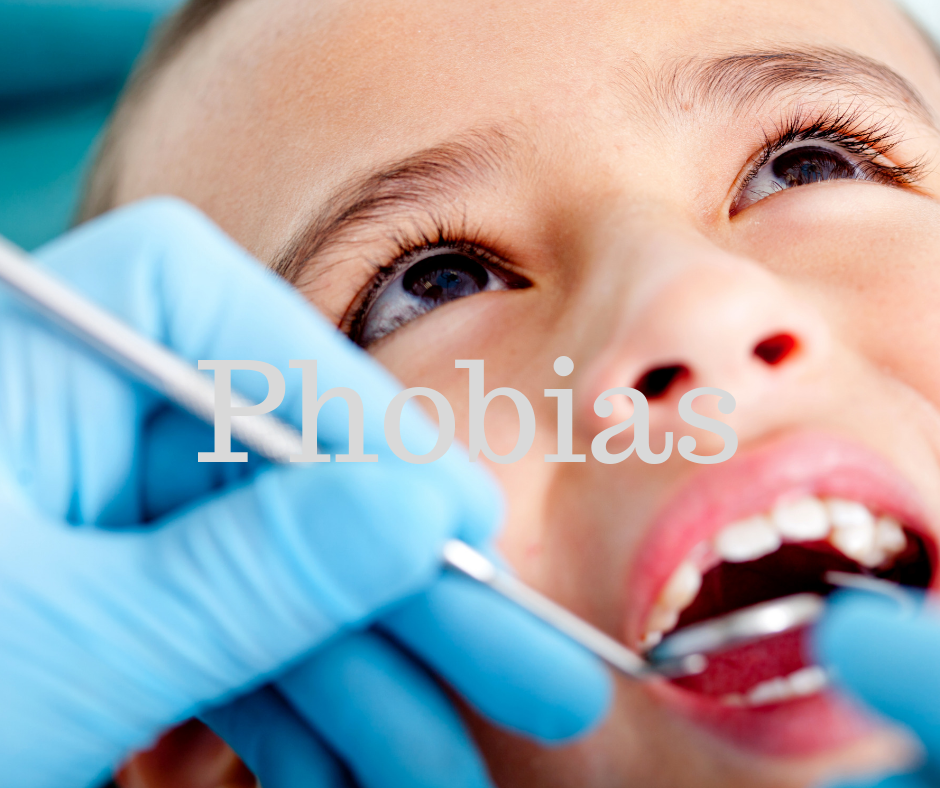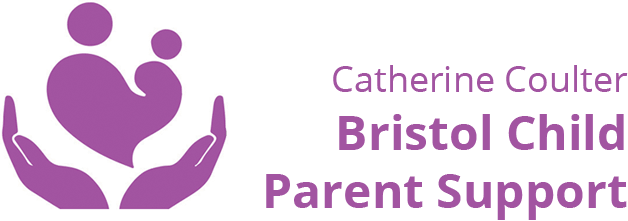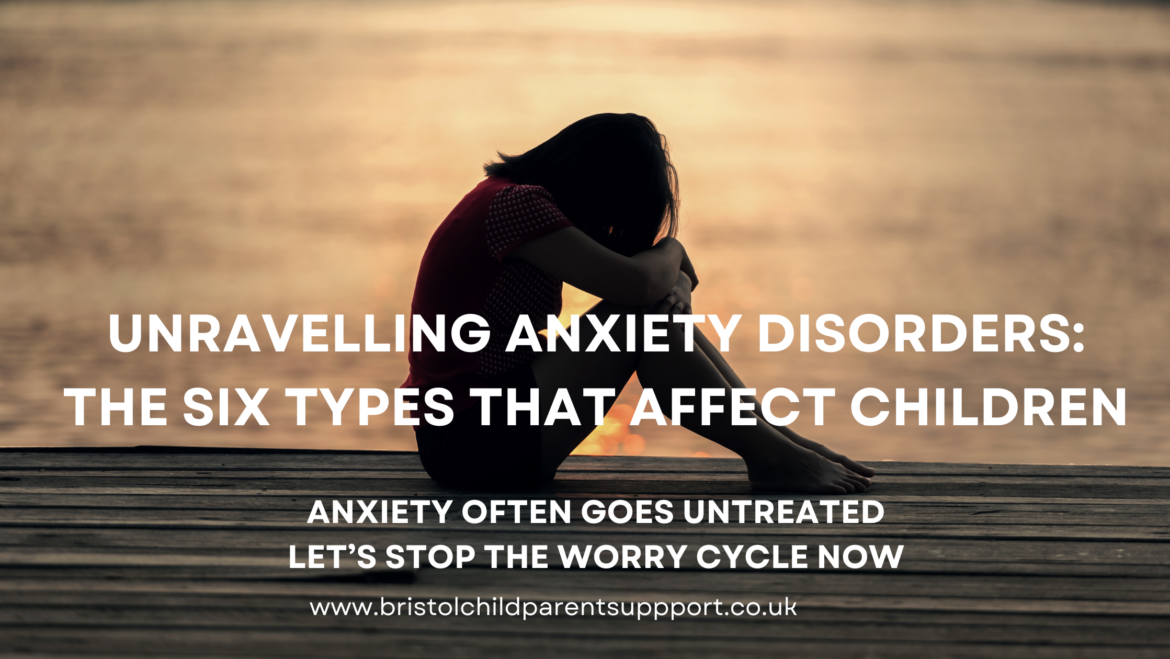Although there is no single factor that causes anxiety, it is crucial to differentiate between typical anxiety and an anxiety disorder.in this article, I’ll outline six types of anxiety disorders that can affect your child. I’ll also discuss the possible causes of anxiety. Be sure to subscribe to my newsletter if you want to receive the latest articles on anxiety directly to your inbox. This is the second part of a series of articles on anxiety.
Why do we need to care about children’s anxiety?
Anxiety disorders are one of the most common disorders. According to NHS England.
One in five children and young people in England aged eight to 25 had a probable mental disorder in 2023, a new survey shows. Despite being aware of it, anxiety disorders continue to remain undetected.
The Mental Health of Children and Young People in England 2023 report, published by NHS England, found that 20.3% of eight-to 16-year-olds had a probable mental disorder in 2023.
Among 17 to 19-year-olds, the proportion was 23.3%, while in 20 to 25-year-olds it was 21.7%.
Normal Anxiety
Children often experience anxiety in various situations, such as starting school, taking tests, or making new friends. This type of anxiety is usually short-lived and does not significantly interfere with their daily lives. It is a natural response to new experiences and can even help them develop resilience and coping skills.

What are the six types of Anxiety Disorder
Anxiety disorders are common in children and young people are common and can have a significant impact on mental health and well-being. Anxiety disorders can affect family, school, and social life, leisure activities, and educational achievement, and they often occur alongside other mental health problems. Your child is more likely to suffer from anxiety if they have autistic spectrum disorder and ADHD. Sometimes, Anxiety can occur independently of ADHD. Other times, it can be a result of living with ADHD. Children with ADHD often have more trouble managing stress than children who don’t have ADHD. That’s because ADHD affects how children manage their emotions.
The Diagnostic and Statistical Manual of Mental Disorders lists six types anxiety disorders
Separation Anxiety
Separation anxiety is a natural developmental stage. The baby may weep if its mother is out of view for a short while, while the young child may hold onto you or throw a tantrum when they are about to start school for the first time. Since children depend on their carers, it’s natural for them to feel vulnerable when you leave them. Although the degree and duration of separation anxiety may differ greatly among children, it is crucial to keep in mind that feeling a little anxious about being away from parents is normal, even as a child grows older.
However, some children experience separation anxiety that doesn’t go away, even with a parent’s best efforts. These children experience a continuation or recurrence of intense separation anxiety during their junior school years or beyond. They often complain of tummy aches, headaches, or other physical symptoms. The distress prevents them from participating in age-appropriate activities and learning opportunities like joining sports teams or, in some cases attending school. The anxiety often means that they need their parents to be constantly present. Therefore, this is often time-consuming and tiring for parents. I also need to point out that it is not just young children that suffer from separation anxiety. Teenagers can too. You may also notice:
- Clinging to parents
- Repeated nightmares with a theme of separation.
- Worry or panic when faced with separation from home or family.
- Withdrawing from social situations with friends and hobbies
- School refusal and poor school performance.
- Extreme fear or reluctance of being alone, sometimes at bedtime.
Generalised Anxiety ( GAD)
Children with GAD can worry about just about everything and anything, and the worry is often chronic, long-lasting, and hard to control. The difference between normal feelings of anxiety and the presence of a generalised anxiety disorder is that children with GAD worry more often and more intensely than other children in the same circumstances. Another distinguishing factor in GAD is that anxiety focuses not on external triggers like social interaction or contamination but internally. Children with GAD tend to seek frequent reassurance from caregivers, teachers, and peers about their performance, although this reassurance only provides a fleeting relief from their worries. Not only will you notice physical symptoms, but you may notice lots of questioning and your child trying to manage the outcome of their future,
Anxiety always anticipates the future, and your child may use many “what if questions”.?
Will we get there on time?
What if I can’t fall asleep the night before the test?
You may also notice negative thinking patterns,” cognitive distortions”. Sometimes they can be called challenging thoughts and even thinking mistakes or errors. They are often unrealistic but, above all and are overly self-critical. Unlike adults, children cannot realise their beliefs are unrealistic.
Panic disorder
This often starts in older children and young adults. It’s the repeated fear of impending doom or danger which develops after unprovoked physical symptoms, rather than lots of difficult thoughts. Panic attacks can also be accompanied by physical symptoms, which may include:
- Feeling faint, dizzy or light-headed
- Feeling nauseous
- Abdominal discomfort
- Chest pains and shortness of breath
- Heart palpitations
- Fluctuating body temperature
- Hyperventilating
Specific phobia

This is an extreme or unreasonable feeling of fear or anxiety linked to a specific animal, object, activity, or situation. This fear causes extreme distress and can stop children taking part in normal day-to-day activities (Evans 2012). I’ve worked with parents and children with fear of insects ( flies and bees), rain and dentists.
Social Phobia
This refers to persistent anxiety in children or young individuals when faced with social or performance scenarios involving unfamiliar people, where they feel like they are being closely observed (APA 2013).
They may also avoid situations that trigger this fear. The child may worry about behaving in a way that is shameful or humiliating, which can result in a panic attack (APA 2013). They may either avoid these distressing situations altogether or participate in them with extreme unease and discomfort (APA 2013).
According to the Nice Guidance, there are several specific symptoms (one or more) that can indicate a disorder in your child if they have been present for a prolonged period.
- They may feel anxious when performing tasks in front of others. They may fear making mistakes or being ridiculed by others. As a result, school can be a major source of distress for them.
- They may be unwilling to do these tasks, or if they are required to do them, they may become extremely agitated or angry.
- Does your child get scared about doing things with other people, like talking, eating, going to parties, or other things at school or with friends?”
- Does your child find it difficult to do things when other people are watching, like playing sport, being in plays or concerts, asking, or answering questions, reading aloud, or giving talks in class?
- Does your child can’t do these things or try to get out of them?”
Selective mutism
This is when a child consistently fails to speak in situations in which they are expected to speak, such as at school (APA 2013). Selective mutism isn’t a communication disorder and it’s also not the child being uncomfortable with speaking in those situations, or not knowing what to say (APA 2013).
Children who have selective mutism can communicate confidently and successfully in environments where they feel at ease, safe, and relaxed. They may speak at home with their immediate family or with their closest friends.
Why is it that children experience various types of Anxiety Disorder?
The Association of Child and Adolescent Mental Health acknowledges the causes of anxiety disorders is complex. Genetics, family dynamics, and environmental factors are believed to contribute to their development. Risk factors include:
- Genetics – anxiety disorders tend to run in families.Children of parents with an anxiety disorder are seven times more likely to have an anxiety disorder, compared to children of parents with no disorder.
- A child’s temperament – for example, an inhibited, sensitive temperament in early childhood, is a risk factor for anxiety disorders in middle childhood and mid-adolescence. Another possible factor to consider is the influence of information processing biases, such as a child’s tendency to perceive uncertain situations as potentially dangerous..
- Emotional neglect in childhood, such as rejection, criticism, and a negative relationship with their main attachment figure (usually a parent).
- Stressful life events and Trauma
Unfortunately, as parents, we do have an impact on our children’s capacity to manage anxiety. Surprisingly, if we are over-involved in our children’s lives, it can lead to anxiety as well as parent-parent conflict. Helicopter Parenting, do you take on too much responsibility in your parenting?
How would you know when your child’s anxiety becomes a disorder?
Remember the three D’s:
- Distress
- Duration
- Disruption, there is further information in my last article
Anxiety disorders are characterised by excessive fear, anxiety, and worry about events or activities, and this happens more often than not for a child and continues for at least six months (American Psychiatric Association (APA) (2013) Diagnostic and Statistical Manual of Mental Disorders (DSM-V). The anxiety or worry, or physical symptoms that arise as a result, can cause significant distress to a child or young person and affect their quality of life and ability to function day-to-day.
Treatment
Cognitive behavioural therapy (CBT) is the primary approach for treating anxiety disorders in children and adolescents, and has proven to be successful. This therapy can be administered in different formats, such as parent-guided sessions, computer-based programs, and in-person meetings. While medication may also be an option, it is not commonly recommended.
CBT is not suitable for everyone

One of the main reasons CBT therapy may not be suitable for every child is their age. Young children, particularly those under the age of 8, may not have the cognitive ability to fully understand and engage in CBT techniques. CBT therapy relies heavily on cognitive skills such as introspection, self-reflection, and problem-solving, which may be beyond the developmental level of young children. In these cases, age-appropriate therapeutic approaches, such as sandplay/play therapy or art therapy, may be more effective.
One thing to think about is neurodiversity. It’s all about how our brains work and behave in different ways. Some children, like those with autism or ADHD, might have a harder time learning and understanding things compared to other kids. That’s why regular CBT methods might not work as well for them.
In Conclusion
Understanding the difference between normal anxiety and an anxiety disorder is crucial for parents. While occasional anxiety is a part of life, an anxiety disorder can significantly impact your child’s well-being. There is evidence that most young people with anxiety disorders don’t access clinical services, and therefore don’t receive treatment, which can often lead to academic and social difficulties that go into adulthood. By recognising the symptoms and seeking professional help, your GP or school nurse and school when needed. Contact me for a consultation if you want to help your child now. Parents can provide the necessary support and guidance to help their children navigate through anxiety and lead fulfilling lives.
I appreciate you taking the time to read this and prioritising the health of your family. Let’s stop the worry cycle. Please contact me for a consultation about your child’s anxiety. For schools or charities, feel free to reach out to me to arrange a presentation for parents about managing anxiety. With Gratitude Catherine
Related Articles:
Recognising Anxiety, the key signs for parents
Executive functioning skills versus emotional regulation?
Does my child have Generalised Anxiety Disorder?
Does my child have Separation Anxiety Disorder?
Understanding the links between sleep problems and nighttime fears



